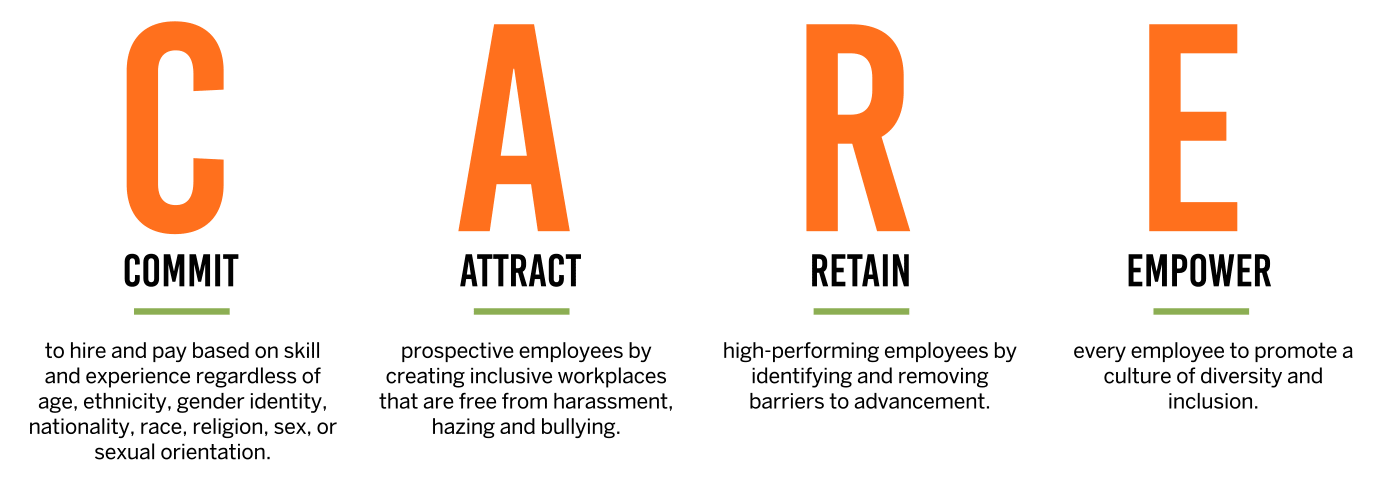Everyone on a jobsite or an office has a role to play in building a Culture of CARE. There are a number of things you can do to help make sure your worksite is safe, welcoming, and inclusive for everyone.

Become an Active Bystander and Ally
How many times have you felt uncomfortable with how somebody on a jobsite was being treated but didn’t do anything about it? By staying silent, you are contributing to the negative behavior. Anytime you see or hear disrespectful behavior, you should take steps to act. Let’s talk about some of the ways you could intervene safely to help a coworker who is being harassed, hazed, or bullied:
Confront the Situation Directly. Step in and say something to immediately stop the situation. For example, if a coworker is making a racist joke, tell the coworker the joke isn’t funny, it’s racist, and it needs to stop.
Create a Distraction. Change the topic of conversation or ask the person behaving inappropriately for help to distract their attention and diffuse the situation. For example, if a foreman is yelling and swearing at one of their employees, call over to the foreman and tell them there’s an issue with what you’re working on and you need their help.
Ask for Help. If you don’t feel safe confronting the harasser or creating a distraction, find somebody you feel comfortable asking for help. Ames requires employees to report all incidents of discrimination or harassment to a member of management, an HR representative, general counsel, or the Ethics Reporting Hotline (800-495-5605), whether you are the object of the harassing behavior or a witness.
What Is Harassment?
Any unwelcome conduct that is based on race, color, religion, gender (including sexual orientation), national origin, age, or ability.
- Racist or sexist jokes, racial or homophobic slurs, name calling, physical assaults, or threats.
- Offensive objects or pictures: pornography or nude photos, swastikas, etc.
- Unwanted or inappropriate touching, texting, or calling. Repeatedly asking a colleague on a date.
- Telling a colleague that they were only hired because of the color of their skin to fill a “diversity quota.”
What Is Hazing?
A ritual or initiation process—commonly for apprentices or new employees—that intentionally causes embarrassment.
- Refusing to train apprentices or teach them their trade; making fun of them when they don’t know how to do something.
- Making an apprentice or new employee take the fall for poor quality work of a more senior employee.
What Is Bullying?
Intentionally and repeatedly causing another person emotional, mental, or physical harm.
- Denying workers breaks.
- Supervisors using condescending or demeaning language.
- Making eye contact or staring down a colleague but not greeting them or saying anything.
